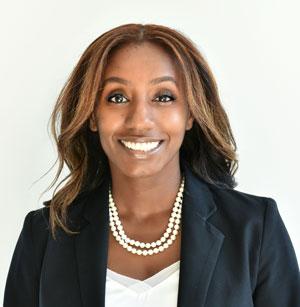
Diversity, Equity & Inclusion
Meet Visiting Clerkship Scholarship recipient Lensa Moen
Each year, the Department of Ophthalmology awards a visiting clerkship scholarship to a fourth-year medical student. A generous donor provided the scholarship.
This past summer, the recipient was Lensa Moen, who attends the Elson S. Floyd College of Medicine at Washington State University in Spokane.
“I am honored and grateful to have been selected as the 2025 recipient of the University of Washington Ophthalmology Visiting Student Scholarship.”
Moen had the opportunity to experience the exceptional education in ophthalmology at UW, spending four weeks at Harborview Medical Center and Seattle Children’s.

Lensa was born in Ethiopia and later emigrated to Sweden with her family. She is multilingual, speaking two Ethiopian languages and Swedish fluently in addition to English.
She came to UW for college, studying neuroscience, then completed a one-year post-baccalaureate clinical internship in medical lab science. She was a medical technologist for 10 years before entering medical school. She is married and the couple had their first child last year.
She became interested in ophthalmology first when a friend had a retinal detachment, and saw how he received immediate, vision-saving treatment for that.
She asked to be placed with an ophthalmologist for a rotation, “and I was hooked after seeing my first surgery.”
During her visiting clerkship this summer, she particularly enjoyed working with the ophthalmology physicians at Seattle Children’s.
“I marveled at their ability to determine eyeglass prescriptions for non-verbal children using retinoscopy,” Moen said.
“I am hoping to be married to ophthalmology,” she said. “I am proposing (applying to residency programs) and we’ll see if she says yes.”
Our DEI Mission
Provide equitable eye care to all through an inclusive and diverse team of faculty, residents, and staff
Our DEI Vision
Become a leader in:
• Inclusive and respectful patient care
• Diverse environment and equitable career opportunities for physicians and trainees
Our Values
• Committed and accountable
• Inclusive and respectful
• Open to new ideas and perspectives
Our Initiatives
• UW Office of Healthcare Equity training
• DEI movie night for trainees and faculty
• Importance of diversifying the medical workforce
Visiting Student Clerkship Program - VISION Scholarship
VISION Scholarship - Valuing Individual Stories and Insights for Ophthalmology Network
The UW Department of Ophthalmology is excited to participate in the Visiting Student Clerkship Program, a funded program designed to give 4th-year medical students the opportunity to experience the exceptional education in ophthalmology offered by the University of Washington. Students will spend two or four weeks at one or more of the UW ophthalmology services, including Harborview Medical Center, Seattle Children’s, and/or VA Puget Sound Health Care System, and care for a variety of patients in our tertiary care centers. Students will also be expected to attend all scheduled medical student and resident teaching sessions, conferences and present at least one case presentation to the other students on the rotation.
Eligibility
The program is open to all applicants who are currently enrolled in a U.S. medical school and demonstrate academic excellence, Applicants should be strongly motivated to pursue a career in Ophthalmology.
Application
The funded Visiting Clerkship position will be available in June, July, August, or September. Funding includes a stipend of up to $1,500 to cover housing and travel costs for either two or four weeks.
Students must also apply through VSLO and submit a personal statement separately to ophthclerk@uw.edu.
DEI resources
Ophthalmology
Mend the Gap: Equity in Medicine: Strategies to Combat Sexual Harassment, a podcast featuring Michelle Cabrera, MD, Associate Professor, and others
UW Medicine
-
New- Learn more about the Medicine’s Equity Impact Review Tool
-
UW School of Medicine’s Diversity, Equity, and Inclusion Faculty Taskforce
-
UW Network of Underrepresented Residents and Fellows
(UW-NURF)
-
UW Medicine’s Bias Reporting Tool:
The University of Washington School of Medicine has developed a tool to report incidences of bias from one-time microaggressions to more severe and sustained behavior. For more information: https://depts.washington.edu/hcequity/bias-reporting-tool/ )
To access the reporting tool: https://redcap.iths.org/surveys/?s=RH49HNT8EA
University of Washington
Seattle Children's Hospital